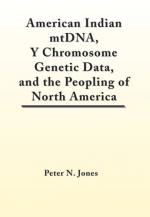|
This section contains 715 words (approx. 3 pages at 300 words per page) |

|
The Y chromosome is one of two sex chromosomes present in many organisms. It never occurs alone but is paired with an X chromosome. The Y is usually the smaller of the two, though the size and shape may vary.
In mammals, there is a significant homology between the Y chromosomes of different species, but the human Y chromosome is somewhat unique in having a large region of heterochromatin, non-coding DNA, that makes up most of the long arm. This heterochromatin provides a useful tool in chromosome identification, since it is the brightest region of the human genome when the chromosomes are stained with a fluorescent dye such as quinicrine. A quick determination about the presence or absence of a Y chromosome in a newborn with ambiguous genitalia can be made by examining metaphase cells for this bright staining region.
The short arm of the Y...
|
This section contains 715 words (approx. 3 pages at 300 words per page) |

|


